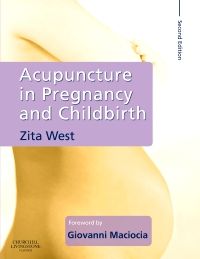Acupuncture in Pregnancy and Childbirth, 2nd Edition
ACUPUNCTURE IN PREGNANCY AND CHILDBIRTH is a concise highly illustrated and practical guide to using acupuncture to treat women throughout their pregnancy and labour. Drawing on an unparalleled wealth of experience as a midwife and an acupuncturist, the author has produced a book accessible to both acupuncture students and practitioners covering physiology related to pregnancy and childbirth, illuminating links between Western knowledge and acupuncture approaches and suggesting points and point combinations for particular stages and actions during pregnancy and labour.
ACUPUNCTURE IN PREGNANCY AND CHILDBIRTH is a concise highly illustrated and practical guide to using acupuncture to treat women throughout their pregnancy and labour. Drawing on an unparalleled wealth of experience as a midwife and an acupuncturist, the author has produced a book accessible to both acupuncture students and practitioners covering physiology related to pregnancy and childbirth, illuminating links between Western knowledge and acupuncture approaches and suggesting points and point combinations for particular stages and actions during pregnancy and labour.
New to this edition
- Covers recent advances in relation to the effects of aspirin and heparin to the immune system and pregnancy
- Includes IVF pregnancies
- Glossary and appendix of useful addresses
- Fully updated and revised throughout to include recent research
- Nutrition and its effect on the foetus (new and developing area of research)
Key Features
- Highly illustrated with summary boxes and guidelines
- Covers nutritional aspects of pregnancy
- Gives practical advice and instruction on the use of acupuncture through the four trimesters of pregnancy and labour
- Uses case examples to further illustrate the text
Author Information
By Zita West, Midwife, and Acupuncturist, Banbury, Oxfordshire, UK












